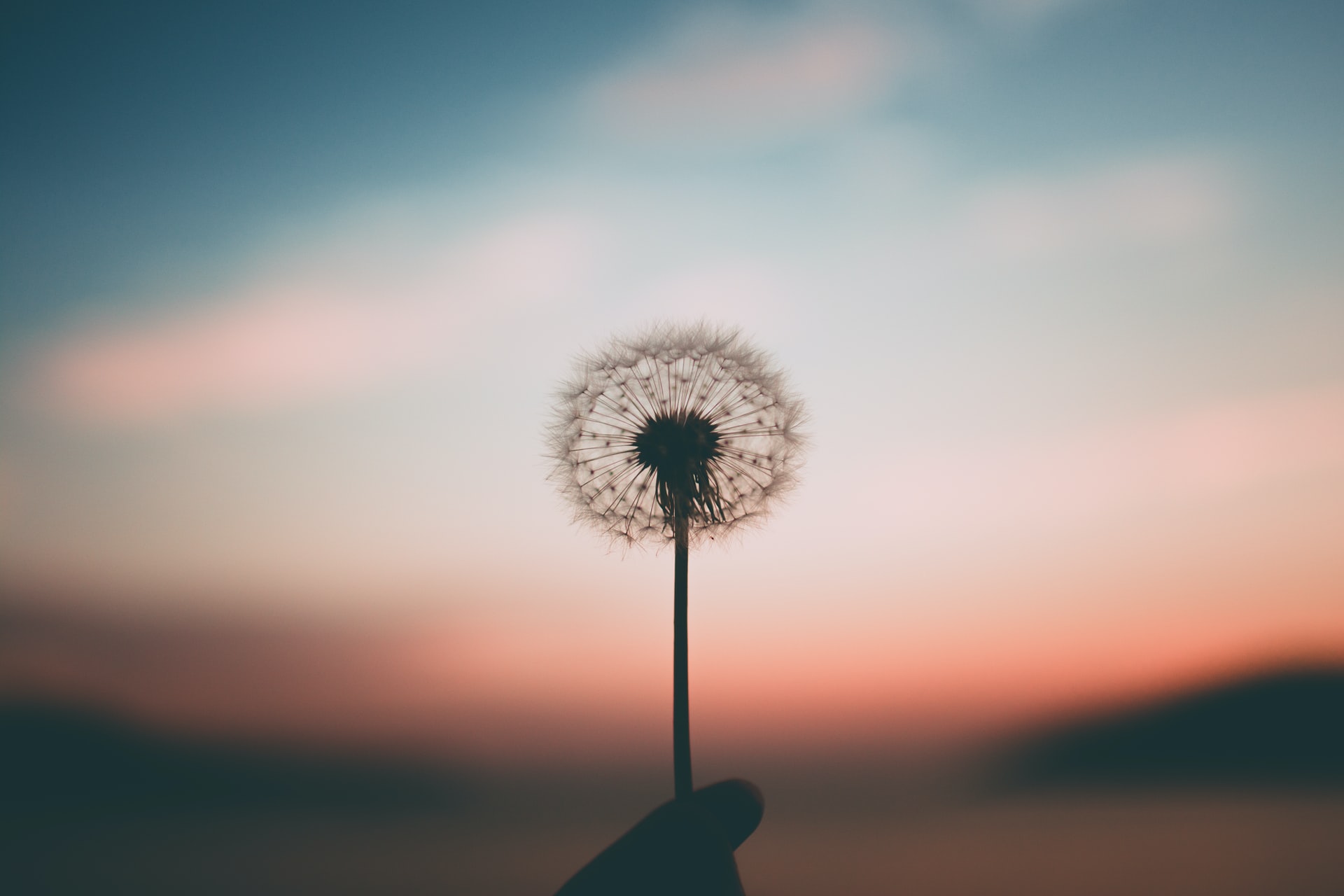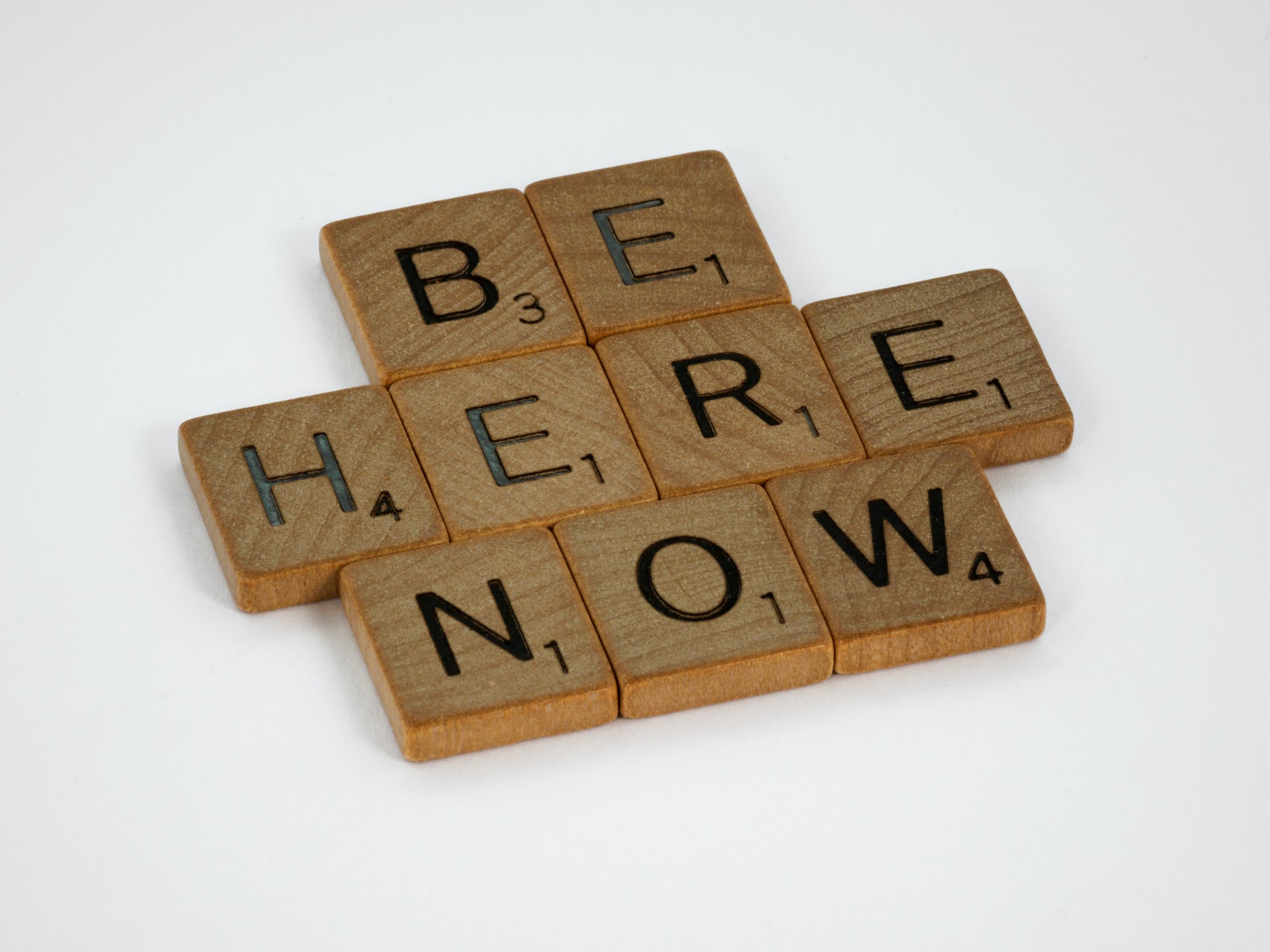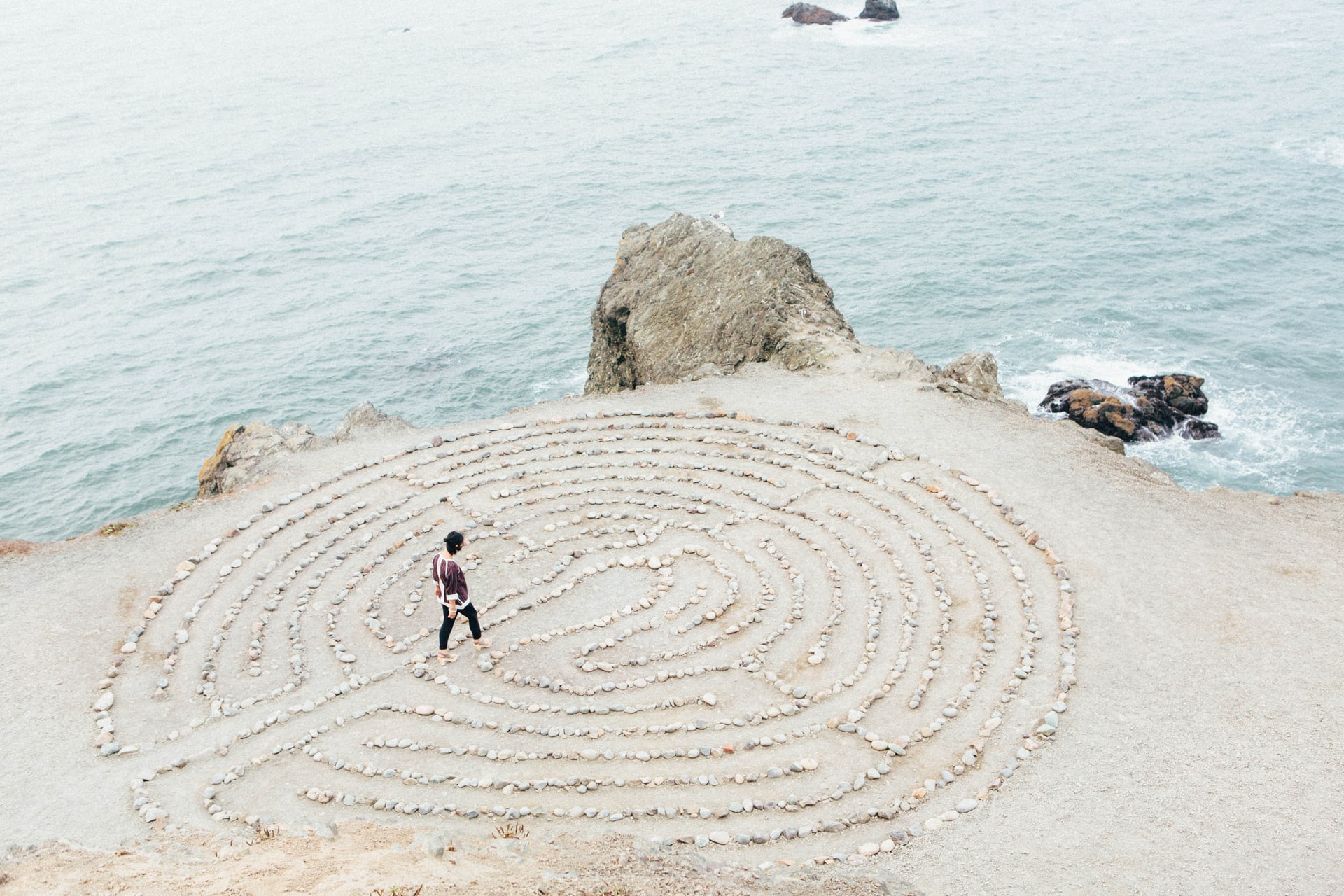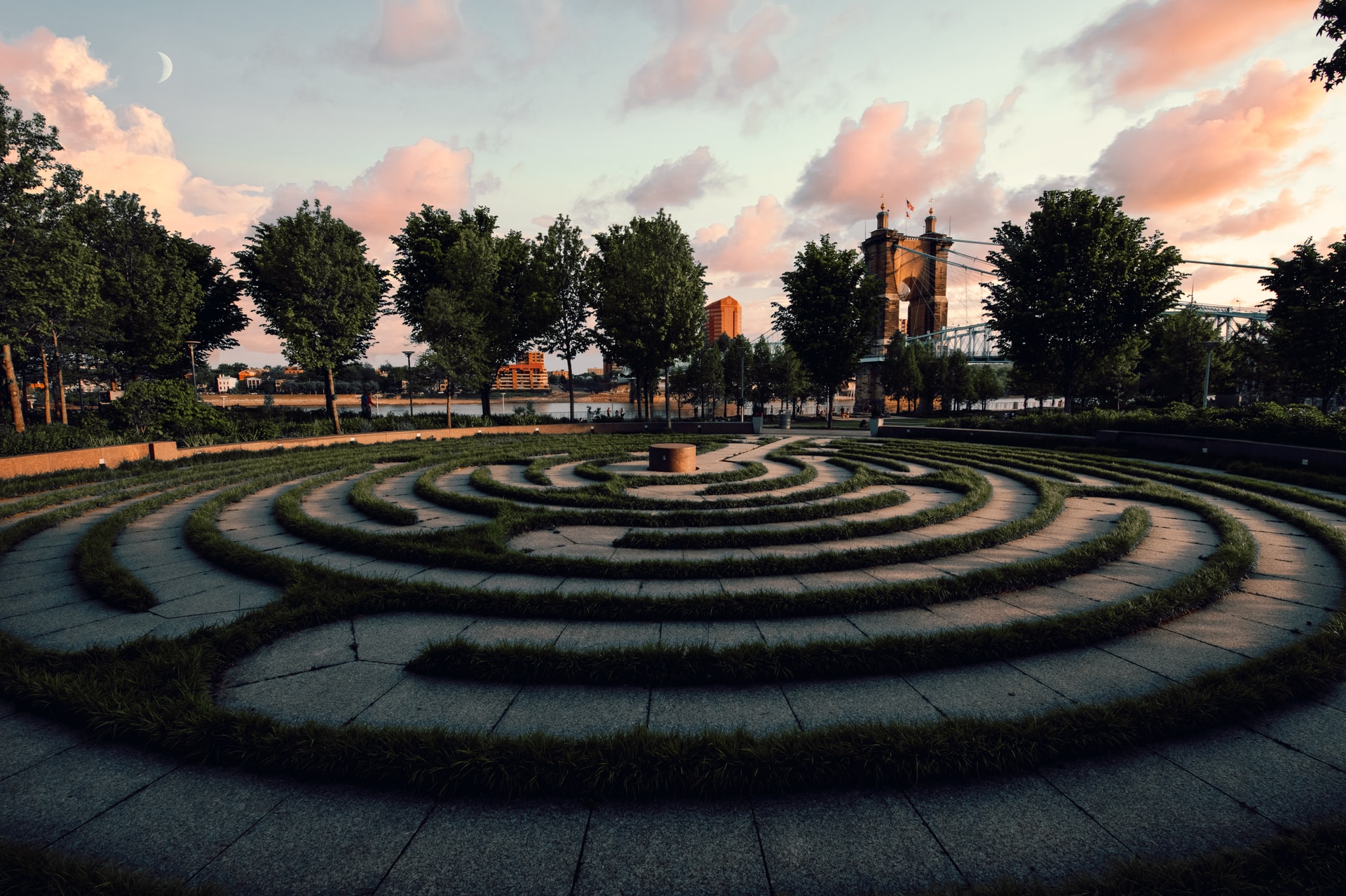Want to be 10 Percent Happier?

I see a lot of people - especially professional women, mid-career with plenty to manage at home and at work, just really struggling. And I have been there too - heck, every other week! When I was wrestling with the stress of life back at work after my second go with cancer my counselor asked me if I meditated. I said, "No, I have tried, but I either hyperventilate or can't really clear my mind."
She suggested I try one of the Apps for meditation and I did. I use Headspace every day now, and it has fundamentally changed my life. No, it is not all better all at once, it is not a panacea, but I am more at ease - more content. And what could be better than that? Like Dan Harris' book about his journey to meditation, I am definitely "10% Happier".
Incorporating practices into your life that encourage the development of your mind-body connection can result in significant mental and physical health benefits.
Tuning into your body and emotions can be achieved through practices such as mindfulness, meditation, and labyrinth walking. These practices encourage us to relax, both mentally and physically, and let our intuition guide our thoughts and movements.
Participating in these activities can reduce stress, high blood pressure, negative emotions, and sleep problems, and increase calmness, clarity, and overall mental wellbeing.
If you are looking for a way to unwind, reduce stress, and listen to your body, try incorporating one or more of these practices into your daily routine.
Mindfulness

“When you drink just drink, when you walk just walk” – Zen saying
Mindfulness is the act of purposely focusing on the present moment and accepting it without judgment.
This means that in order to be mindful and aware of your thoughts and feelings, it is helpful to be able to acknowledge your emotions, whether they are positive or negative, and accept them for how they make you feel.
This will help you engage with the present moment. Being able to practice mindfulness is highly beneficial, as there seems to be an increasing trend of fast-paced and stressful lifestyles. Such lifestyles result in a tendency to rush through life without stopping to enjoy and reflect on the present moment.
Practicing mindfulness is a great way to train yourself to naturally incorporate awareness into your everyday routine, reduce stress, and experience life as you are living it.
“Life is a dance. Mindfulness is witnessing that dance.” – Amit Ray
How does one practice mindfulness?
Mindfulness involves processing and interpreting what you are experiencing, whether it be emotional, mental, or sensory. This allows us to savour the present moment instead of worrying about the past or future.
Although everyone has the capability to focus on the present, sometimes we need to remind ourselves by consciously practicing mindfulness. Mindfulness can be practiced by tuning in to your movements, breathing, bodily sensations, and surroundings.
“Few of us ever live in the present. We are forever anticipating what is to come or remembering what has gone.” – Louis D’Amour
Take time out of your day to acknowledge these elements, as they are what make up the present moment.

There are many structured exercises available to help you with your mindfulness practice. These include walking meditation, body scan meditation, and guided breathing exercises.
Walking meditations can be done inside or outside, whenever you have time to walk with no goal in mind other than slowing down your pace and becoming aware of your movements.
Lift each foot slowly and be mindful of the connection between your body and the earth. You don’t need an abundance of space to participate in walking meditations, as taking 10-20 steps in one direction and back can be sufficient!
Body scan meditations and breathing exercises allow you to become fully aware of the sensations your body is experiencing in the present moment.
The history of mindfulness practice
Mindfulness practice has become popularized by Dr. Jon Kabat-Zinn through his eight-week mindfulness-based stress reduction (MBSR) program which focuses on mindfulness as a way to manage stress, illness, pain and other factors that may contribute negatively to one’s life.
Dr. Kabat-Zinn’s MBSR program was created in the 1970s using his medical knowledge as well as the knowledge he gained from studying under Zen Buddhist teachers.
Mindfulness-based stress reduction programs and classes are offered in a variety of locations from hospitals to yoga centres. Mindfulness can also be practiced on your own in order to reduce stress and enjoy the present.
How you can take action:
Spend a few minutes every day practicing mindfulness. Taking this time to engage and connect with your feelings and surroundings results in improved personal awareness. This awareness helps you to identify and address issues or negative feelings you may encounter, resulting in stress reduction and an increase in overall wellbeing.

Try out this mindfulness breathing technique.
- Find a comfortable position for your body, whether you are sitting on a chair, on the floor, or lying on your back. Use cushions if needed.
- Place your left palm on your stomach and your right palm beneath your left collarbone. These hand placements will allow you to feel your breath.
- Focus on your breathing and creating a regular rhythm. Take notice of your chest and stomach expanding as you let your body relax and allow your breath to fill up your body with each inhale. Notice your body deflating as you exhale and empty your lungs.
Meditation

“Quiet the mind and your soul will speak.” – Ma Jaya Sati Bhagavati
Meditation has been practiced for thousands of years as a way to enhance one’s mental and physical wellbeing by reducing stress and promoting relaxation.
There are very few, if any, barriers to meditation practice, as it does not require any materials and can be done in a wide variety of locations. Whether you are at home, on your morning commute, or walking through a park, a few moments can be taken to centre yourself through meditation.
Why you should meditate
The practice of meditation aims to help you focus your attention on the present moment, take notice of your thoughts, feelings, and emotions, and calm your mind.
When your mind is constantly racing and your thoughts seem to wander endlessly, it can be extremely beneficial to practice meditation in order to clear your head, shift your focus to the present moment, and restore your inner peace.
“Do not dwell in the past, do not dream of the future, concentrate the mind on the present moment.” -Buddha
What does meditation entail?
Some important elements of meditation include finding a comfortable position, making use of relaxed breathing techniques, and focused attention.
While it is completely normal for your thoughts to wander while meditating, if you find that your focus is shifting away from the present, take a moment to acknowledge whatever you are thinking about and then gently refocus your attention.
“The best meditation is effortless. The best meditation is a gentle awareness.” – Maxime Lagacé
Being able to guide your thinking is an essential meditation skill that you can gradually build over time. As you practice meditation, you may find that you are able to stay focused for longer and the wandering thoughts occur less frequently.
Once you get the hang of it, meditation is a great way to give your mind a break from daily stressors.
Getting started with meditation
It can be helpful for beginners to make use of guided meditation apps, podcasts, videos, and instructors that can help introduce you to different meditation types, along with helpful tools and tips that can enhance your meditation practice.
It can be useful to set up a comfortable place for your meditation practice. Consider adding a comfortable armchair, rug, or pillows to your meditation space in order to help your body and mind unwind.
Meditations can be targeted towards specific ailments, situations, and issues such as anxiety, stress, improving relationships, boosting self-esteem, and helping you to fall asleep at night.

Meditation can be practiced in many different ways such as guided meditations, repeating mantras, incorporating physical movements like walking or yoga, and engaging in prayer. You can even meditate in public!
Specific meditations can include relaxing your body through movement such as inhaling in a standing position while raising your arms above your head.
Take a moment to stretch your body upwards. As you exhale, lower your arms back to their starting position.
Visualization is another useful meditation tool. Sit cross-legged on the floor or in a chair. Begin by visualizing that you are standing on a train platform while watching a train speed by.
Project your thoughts and worries onto the train and let them disappear as the train passes.
Keep in mind that there is no right or wrong way to meditate. Experiment with different methods of meditation, and don’t be afraid to adjust according to what feels right for you.
How you can take action:
Try out this body scan meditation.

- Get into a comfortable position while lying flat on your back, either on the floor with a mat or rug, or on your bed. Close your eyes and let your hands fall to your sides.
- Take a few moments to steady your breathing. Draw your attention to the sensations your body is experiencing. Start by taking note of any discomfort or tension and aim to fully relax each of your limbs by letting them sink into the floor.
- Move from the tip of your toes all the way up to your scalp, taking notice of every inch of your body. Don’t move on to the next body part until you have relaxed the one before it. At the end of this meditation, your body should feel heavy with relaxation.
- Once you feel ready to end your meditation, start gently moving your body parts, once again starting from the toes upwards.
Labyrinth Walking

“The point of a maze is to find its centre. The point of a labyrinth is to find your centre.” – Anonymous
Labyrinth walking is an ancient practice that is featured in many religions or spiritualities for the purpose of prayer, contemplation, meditation, and finding one’s inner peace.
A labyrinth is a geometric pattern that serves as a guide for individuals to walk upon or trace. Walking labyrinths come in many different shapes and sizes and can be created with a wide variety of materials.
You may come across labyrinths that are made out of stones, bricks, grass, gravel, or even in the form of a carpet for easy transportation.
One may also create their own labyrinth with the materials mentioned above. For those who are unable to access a large labyrinth, handheld or paper versions are available as well.
Labyrinth designs
Unlike a maze which serves to confuse users, a labyrinth contains one path to the centre.
This path is also the same path used to find your way back out of the labyrinth. This single path folds in on itself many times, creating a long winding journey with many gentle twists and turns.
One need not worry about hitting a dead end or getting lost, as labyrinths are quite simple to follow and are created in order to instill a sense of calmness in their users.
Why should you walk a labyrinth?
People use labyrinths for a variety of reasons. They can be used to calm your mind, relieve stress, focus your attention, and instill a sense of peace.
These benefits are a result of setting aside some time to participate in a quiet and slow activity which may be very different from how you spend the majority of your time.
During your time spent in a labyrinth, you might find it beneficial to clear your mind of distracting thoughts by reciting a prayer or chant, or practicing mindfulness by focusing on the present moment such as the movements you are making and the sensations you are experiencing.
You may also contemplate a specific question or thought while labyrinth walking. As your journey leads you closer to the centre of the labyrinth, you may find that your reflection becomes deeper and you are able to sense some clarity or release.

Once you have reached the centre, you may take a moment to pause and continue your reflection until you feel the urge to make your way back.
Keep in mind that there is no right or wrong way to labyrinth walk. There is no correct amount of time it should take or any rules regarding what you can and cannot think about.
Simply use your time spent labyrinth walking to relax and do what feels best for you and leaves you with a sense of calmness and contentment upon completion.
How you can take action:
Try labyrinth walking.
- Stand at the entrance of the labyrinth and take several deep breaths to centre your attention and clear your mind.
- Step into the labyrinth and begin walking, following the path at a pace that feels natural and relaxing to your body. You may either try to keep a clear mind, focus on a question or thought, repeat a mantra, or reflect on an idea or issue that has been troubling you.
- Once you reach the centre of the labyrinth, continue your reflection or thoughts until you feel a sense of peace and clarity. Begin your journey out of the labyrinth once you feel inclined to do so.
- On your way out of the labyrinth, slowly begin to return your thoughts back to everyday life. Reflect on your journey through the labyrinth and the conclusions you have come to.
For more on this topic, find out How the Breath Helps the Mind. and how mindfulness and meditation can help reduce Eco-anxiety.
Stay connected with news and updates!
Join my mailing list to receive the latest news and updates. Your information will not be shared.

